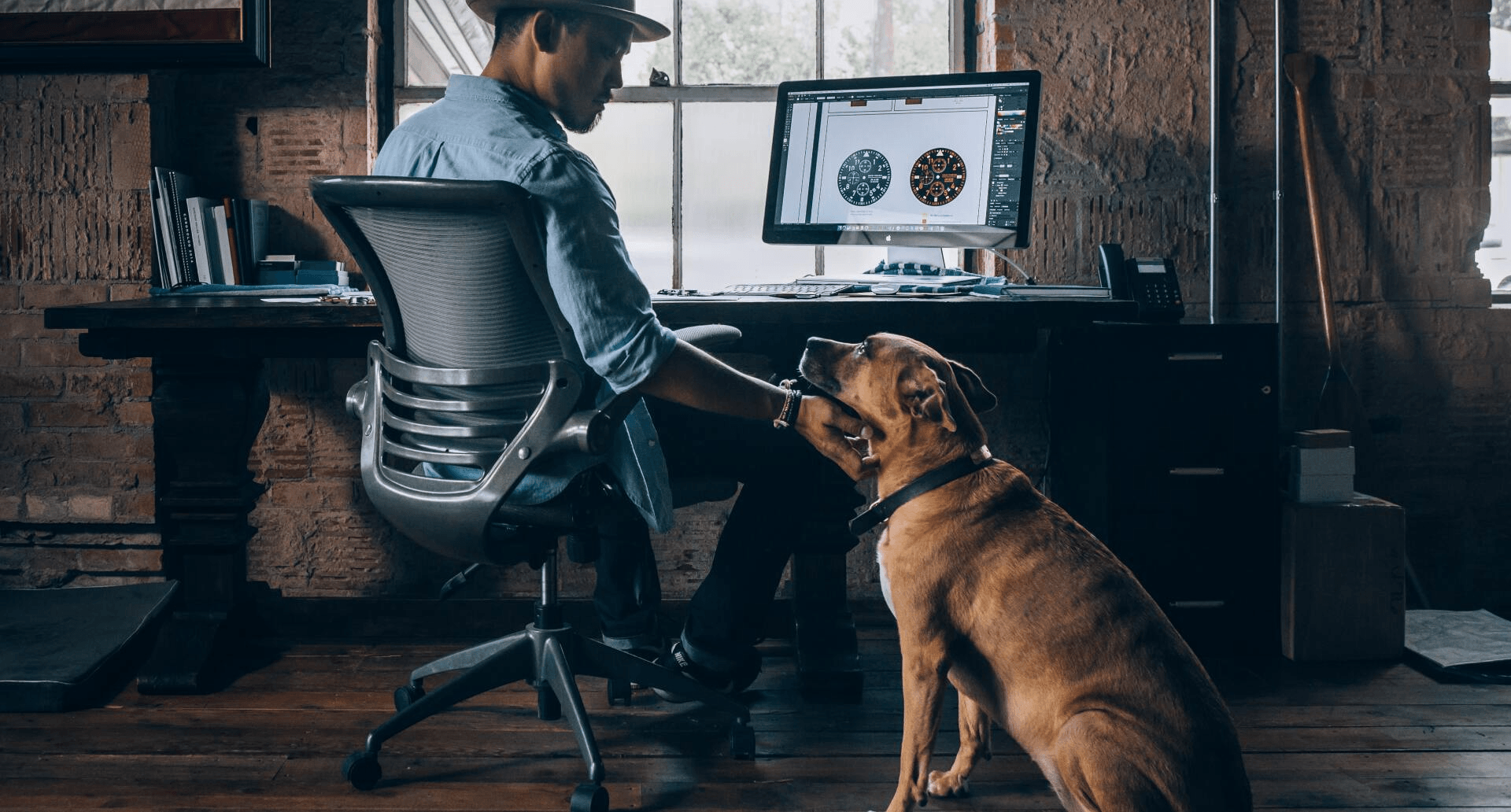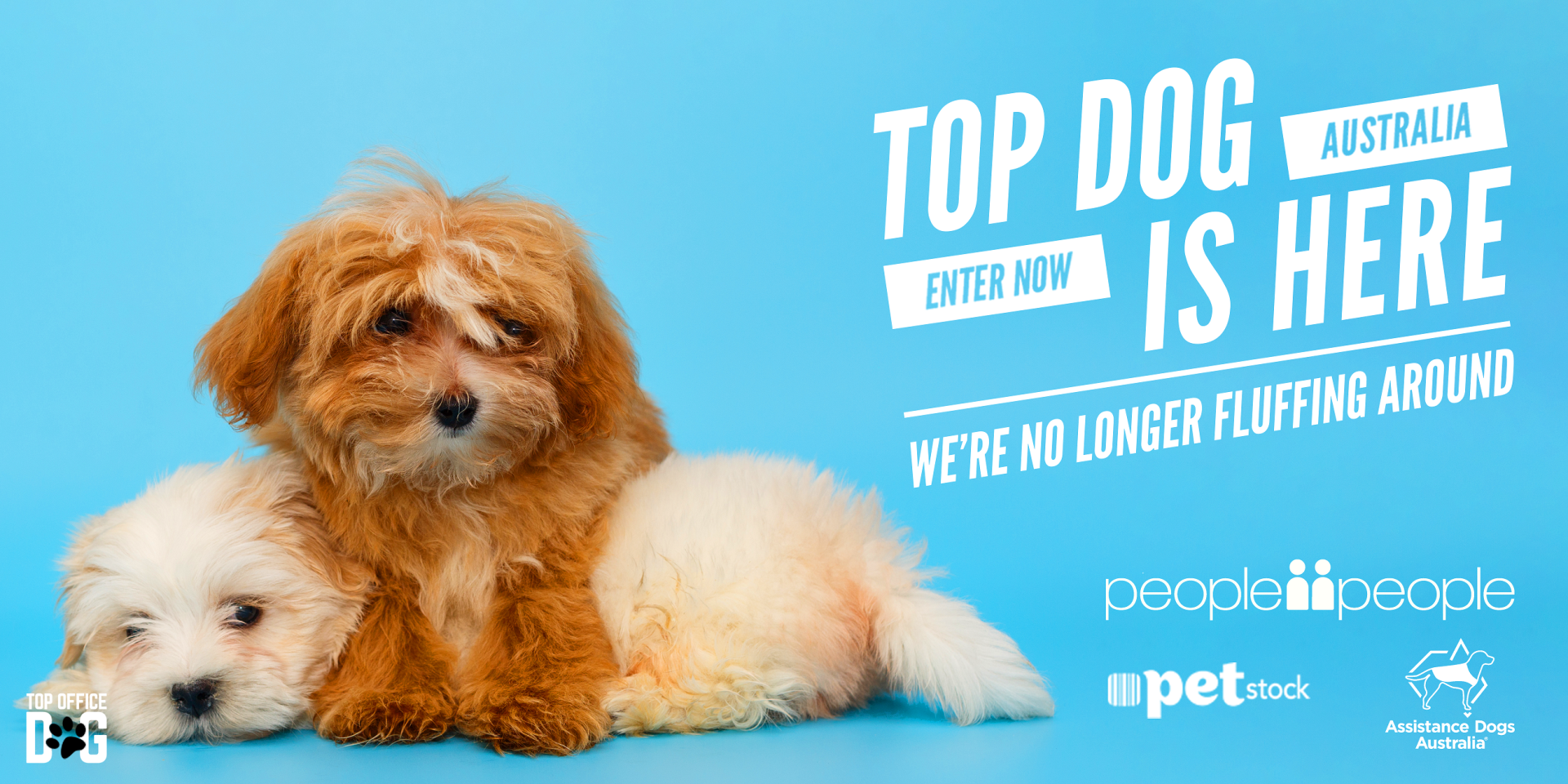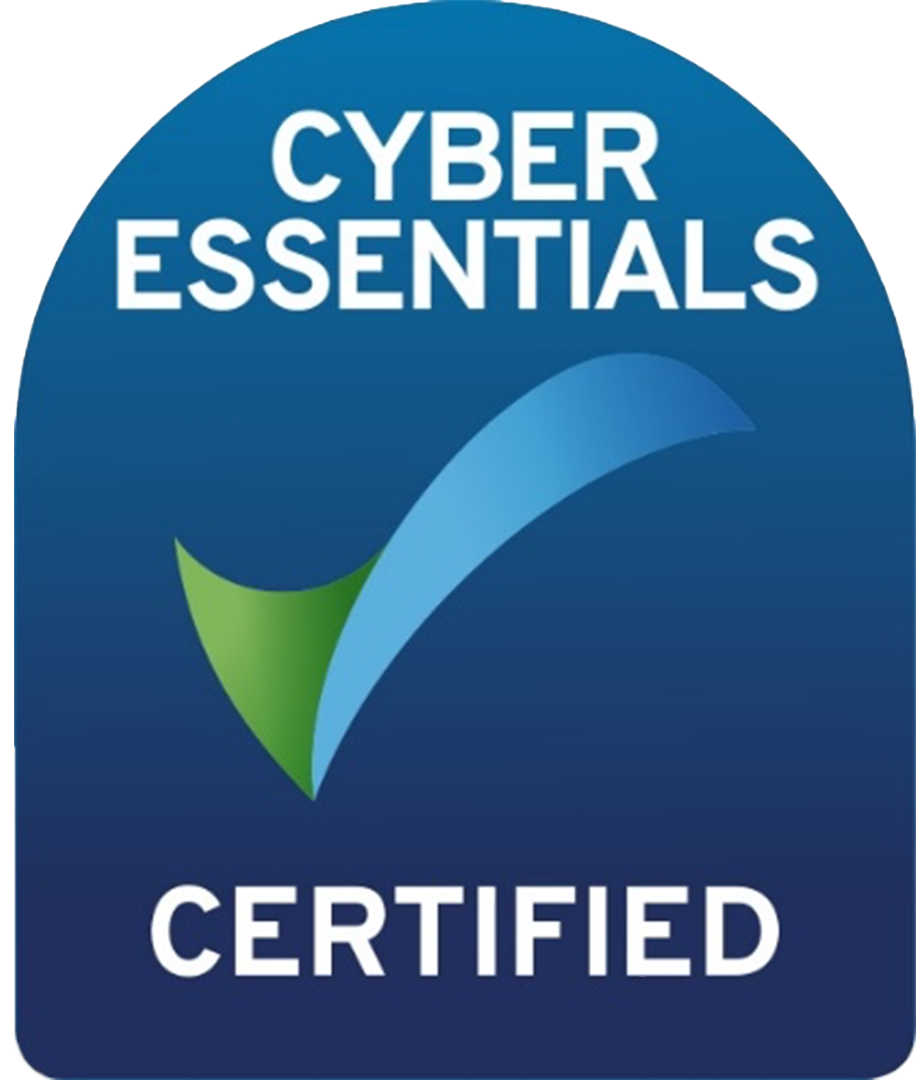5 Productivity Tips of Working From Home With Your Dog
Remi Marcelin • August 31, 2021
people2people, PETstock and Assistance Dogs Australia are proud to celebrate OZTOPDOG. 4 prestigious awards: OZ Top Dog, OZ Top Office Dog, OZ Top Dog with a Job, and OZ Top Dog Friendly Workplace. Learn more and enter now.
Working from home is now a trend that most companies are taking up and thriving at. Working remotely comes with its equal shares of benefits and challenges, especially for pet parents. While having a dog in your workspace is known to increase productivity, drive up morale and reduce stress, pups can also make you distracted and less productive, especially while working at home. This is because they are used to your attention, and they may act up when you stay glued to your computer all day without playing around with them.
Whether you are a pup parent who has just begun working remotely or a new dog owner who has worked from home before, here are five tips on how you can keep your pooch happy while getting work done at the same time.
1) Walk, Feed, and Play Your Dog Before Starting Work
The best way to get your dog to be disciplined during the day is by meeting their needs first. Feeding, watering, walking, and playing with them will give you enough bonding time to deepen your bond and reduce attention-seeking behaviour like whining and unnecessary barking when working.
2) Create a Pooch Free Working Space
Giving your furry friend an independent space from your working space helps create a boundary between work and play. The space you set aside should be comfortable enough for them to play, sleep and relax, which will go a long way in helping to tame them. Creating work and play boundaries will also help your dog get into the routine of not nagging you in your working space.
3) Keep Your Dog Active
Dogs have low concentration spans and might quickly be bored by doing one activity. When they get distracted, they might cause a little havoc by chewing on things, barking unnecessarily, or strolling around the house, which might distract you from your work. The best way to avoid this is by keeping them active. You can create a puzzle box for them and rotate their toys daily to have new options to play with. Or give them a frozen treat to keep them busy.
4) Set Designated Play Times
As a pet parent, you know how much playtime means to your dog. Thankfully, working at home gives you a small window to create breaks and play with them. You can set aside a few minutes that will not interfere with your calls or work and get your pup's tail wagging. You can create a schedule where you get a 20-minute play after every 3 hours of work. That way, your dog doesn't feel neglected, and you can still meet your work targets.
5) Don't Give in to Your Dog's Whining Demands.
Furry best friends are adorable, and resisting them is maybe one of the hardest things ever. They might innocently curl at your foot while you are working, whine, bark, or nudge their head into you just to get your attention. To handle your dog while working at home, you need to learn how to say no to their demand. The best way to do this is by ignoring them because if you push them away or scold them, they may act up or nag even more.
#OZTOPDOG is HERE! Proudly brought to you by people2people and PETstock, your favourite Australian owned retailer of pet supplies.
This year, people2people is supporting charity
Assistance Dogs Australia. Founded in 1996, Assistance Dogs Australia trains and places dogs that specialise in support for people with mobility needs, autism or post-traumatic stress disorder.
Learn more about them
here.
Support Assistance Dogs Australia
here.
Find the job you love I Find the right talent
Get in touch with people2people
Australia
I United Kingdom
In business since 2002 in Australia, NZ, and the United Kingdom, people2people is an award-winning recruitment agency with people at our heart. With over 12 offices, we specialise in accounting and finance, business support, education, executive, government, HR, legal, marketing and digital, property, sales, supply chain, and technology sectors. As the proud recipients of the 2024 Outstanding Large Agency and Excellence in Candidate Care Awards, we are dedicated to helping businesses achieve success through a people-first approach.
Recent articles










